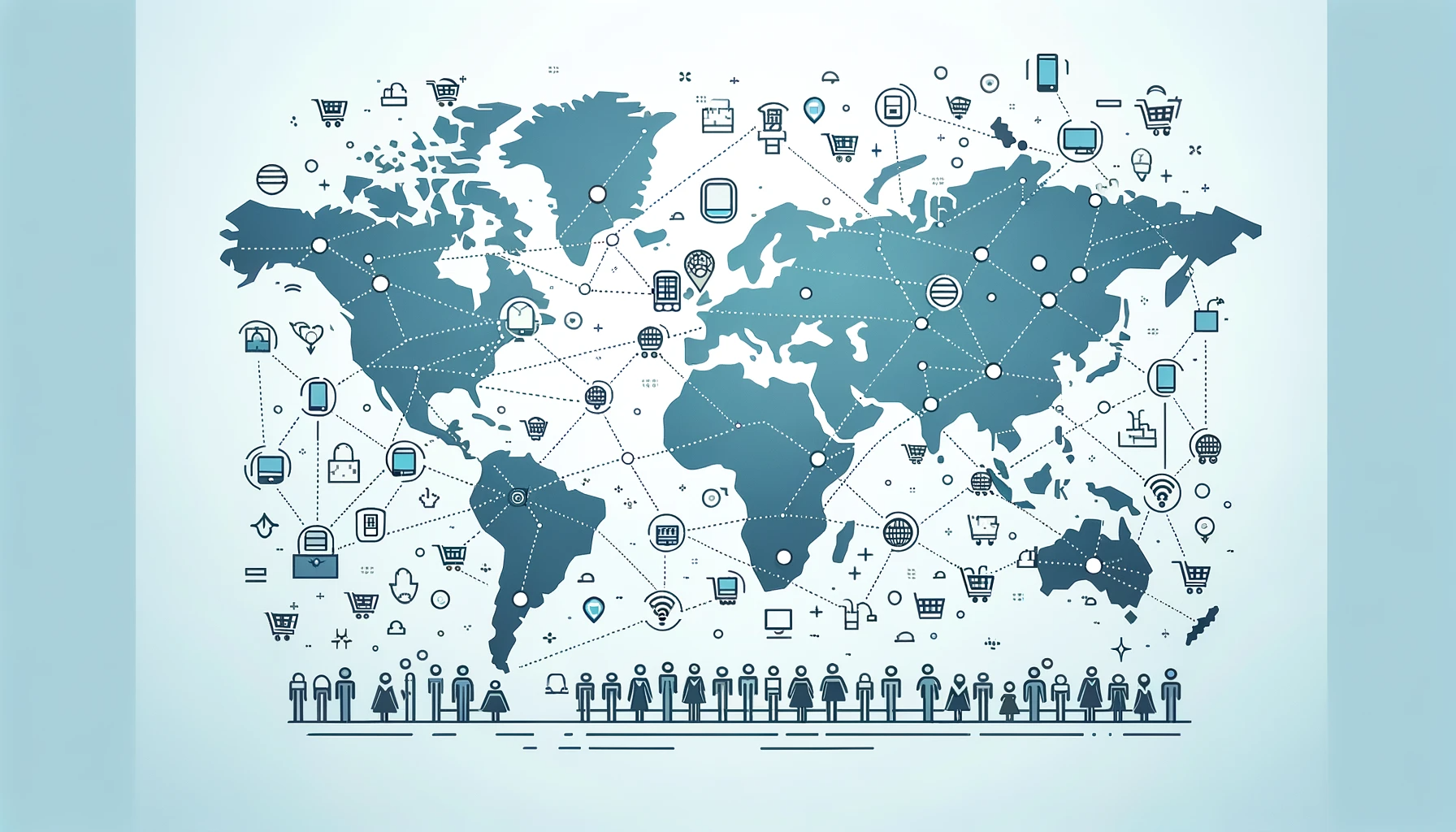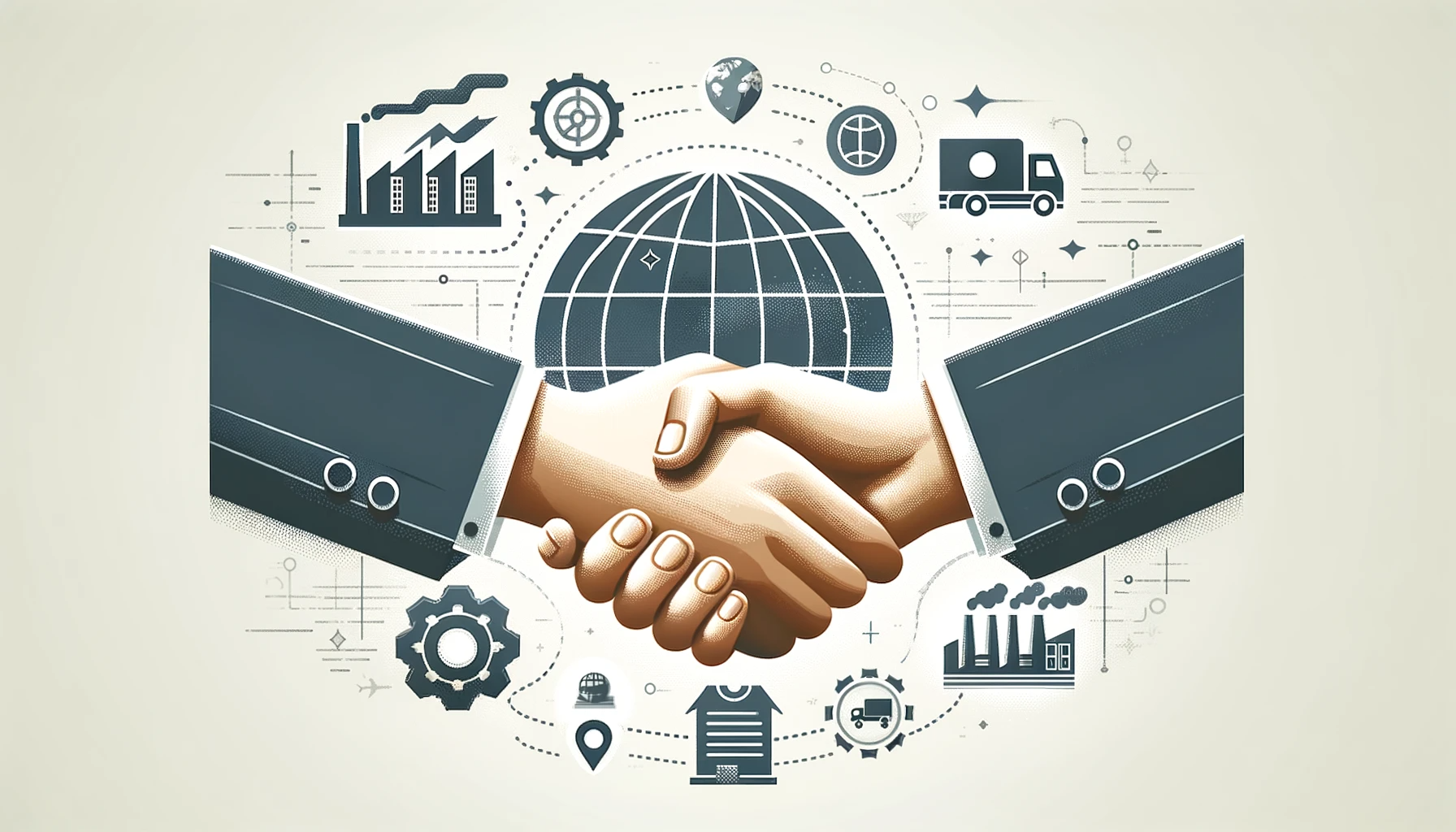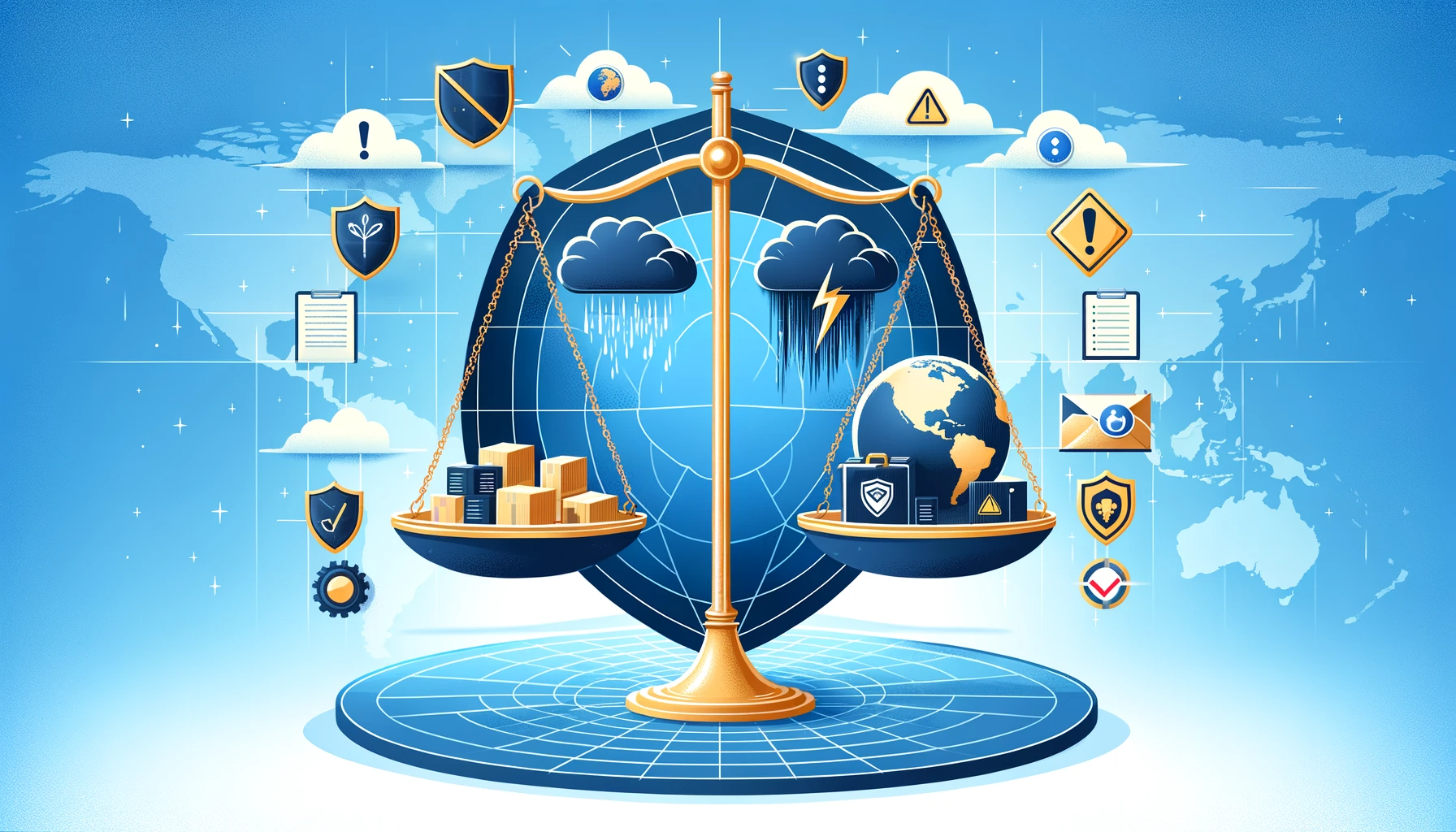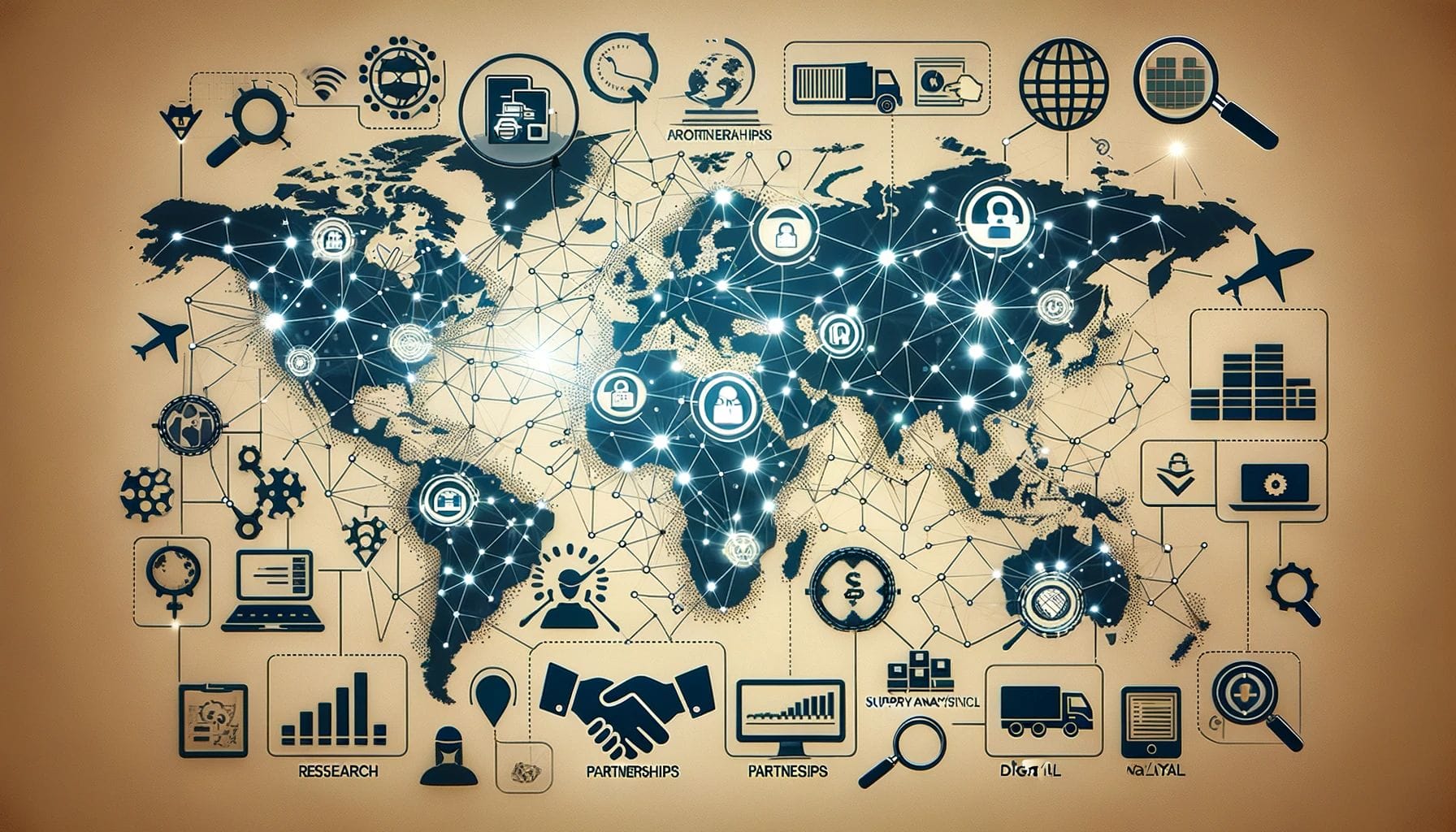Exploring Global Sourcing: Tips For E-Commerce Businesses
Global retail e-commerce sales in 2022 were estimated to have exceeded USD$5.7 trillion worldwide. Judging by that figure, e-commerce is an indispensable part of global retail, a juggernaut that accounted for approximately 19% of worldwide retail sales in 2022. And it’s projected to grow even more in the coming years.
One of the key strategies that fuels this mammoth growth is global sourcing. At its core, global sourcing is about looking beyond local borders to find products, materials, or services. It affords you the luxury of shopping for your business on a global scale, tapping into markets from, say, Shanghai to Sao Paolo.
If you have an e-commerce business, this is a game-changer. It opens doors to a wider variety of products, often at more competitive prices, giving businesses a crucial edge in a crowded online marketplace. It’s not all smooth sailing, however—global sourcing brings with it its own set of challenges. But the potential rewards make it worth considering.
Benefits Of Global Sourcing For E-commerce

Global sourcing is more than just finding cheaper products. You can also add variety and reach new customers. Here are some more of these perks:
Cost-Effectiveness
Who doesn’t love a good deal? By sourcing globally, you can find products at lower costs. Take, for example, cotton T-shirts. Cotton is grown in various countries. By sourcing raw materials from countries where they’re cheaper, manufacturers can lower overall costs. This means more competitive pricing for customers and better margins for the manufacturers.
You can also have those T-shirts printed with your design and have the print services provider send them directly to your customers. Some companies offer this service, like OGO Pod.
Diversification Of Product Range
Variety is the spice of life, and it’s true for your online store too. Global sourcing lets you offer unique products that might not be available locally. Say, for example, you run a clothing store. Sourcing fabrics from India or Italy can give your products a unique appeal that sets you apart from competitors.
Access To New Markets And Customer Bases
When you source globally, you’re not just buying—you’re building connections. These connections can open doors to selling your products in new markets. For instance, if you’re sourcing handmade crafts from Peru, you might find an opportunity to sell your products to customers in the rest of South America.
In short, global sourcing can lead to lower costs, a cooler product range, and customers from corners of the globe you haven’t thought of yet.
Challenges And Risks In Global Sourcing
While global sourcing brings with it a plethora of benefits, it’s not without its hurdles. If you want to take advantage of it, understanding the challenges you might face can give you an advantage.
Here are a few of them:
Let’s say you’re trying to order a batch of products from a supplier in Japan, but there’s a language mix-up, and you end up with the wrong items. Sure, you can use online translation tools, but they’re not always accurate.
Miscommunications can happen easily when dealing with different languages and cultures. It’s crucial to have clear communication channels and, if possible, seek assistance from someone who knows the language and customs. And remember, in a culture that values punctuality and honesty, a misstep can mean losing out on a great deal.
Managing Longer Supply Chains And Potential Delays
A customer waiting for a product stuck in customs halfway across the world isn’t a satisfied customer. Longer supply chains mean more links where things can go wrong, leading to delays. Planning and having backup plans are essential to keep your business running smoothly.
Quality Control And Compliance With International Standards
Here’s a scenario: you find a great supplier with fantastic prices, but their products don’t meet your country’s safety standards. Ensuring that products meet quality and regulatory standards is crucial. This might mean more research and quality checks, but it’s worth it to maintain your reputation and avoid legal issues.
With global sourcing, you might face a few obstacles along the way. But with the right map and tools, you can find some real gems for your e-commerce business.
Key Strategies For Effective Global Sourcing

Make the most of global sourcing by playing it smart. Below are a few tips that could help:
Finding Suppliers And Platforms That Fit You
A crucial step in global sourcing is finding suppliers and platforms that are trustworthy and cost-effective. It involves research using online directories, trade shows, or even word-of-mouth recommendations.
Check their reviews and ask for samples to gauge their quality. Keep an eye on important stuff like product quality, pricing, how fast they can deliver, and their order minimums. Also, think about how they handle payments and customer service.
Depending on your business needs, you might also look into various online marketplaces, drop shipping options, or setting up your website to showcase your products to the world.
Managing Logistics And Shipping
Pick the shipping methods, carriers, and routes that make the most sense for your orders. Keep track of your shipments and keep your customers in the loop. You’ve also got to stay sharp on customs rules, taxes, and fees in different countries.
Make sure your paperwork and labels are spot-on. If you’re dealing with lots of orders or complex ones, think about teaming up with third-party logistics providers or fulfillment centers. They can take care of storing, packing, and shipping your products, making your life a whole lot easier.
Ensuring Quality And Compliance
When sourcing and trading globally in e-commerce, ensuring your products or services are top-notch and play by the rules is crucial. Stick to your markets’ necessary safety, health, and ethical regulations.
Put quality control actions in place—think inspections, tests, and audits—to double-check everything’s in order before and after you ship. You might also want to use quality assurance tools or services.
Building Strong Relationships With Suppliers
Think of your suppliers as partners rather than just vendors. Develop a friendly relationship with them—the better your relationship, the smoother things go. It’ll also help to make an effort to garner their trust. How do you build this trust?
- Offer feedback and support.
- Stick to your promises.
- Respect the culture and values of your partners.
- Always aim to please your customers.
Strong relationships can lead to better deals and priority treatment. It’ll show that you’re not just in it for the quick win but for the long, rewarding journey.
Implementing Effective Communication Channels
Clear communication is key. Never assume something is ‘understood’ and doesn’t have to be spelled out. Instead, have a direct line to your international team. Use tools like email, instant messaging, and video calls to stay in touch. Regular updates and clear, concise instructions can help prevent misunderstandings and keep everyone on the same page.
Leveraging Technology For Supply Chain Management
Technology is your best friend. Use software to track orders, process payments, manage inventory, handle customer service, and analyze supply chain performance. Tools like these can give you a virtual high-tech control room where you can see everything happening with your global sourcing at a glance.
They act as digital assistants, making your work smoother and more efficient. Plus, diving into data gives you the insights to make sharp decisions, spot new opportunities, and keep up with market trends and customer preferences. It’s all about staying ahead of the game and making the moves that count.
Understanding And Complying With International Trade Regulations
Make sure you’re up to speed with the trade laws and regulations of the countries you’re dealing with. Here are some of the most important international trade regulations to keep in mind:
Customs Regulations
- Import duties and taxes: Understanding and calculating tariffs, value-added tax (VAT), and other import charges is crucial for accurate pricing and managing costs.
- Import/export restrictions: Certain goods may be prohibited or restricted from import or export, requiring special licenses or permits.
- Country-of-origin regulations: Marking and labeling requirements for your products must comply with the country-of-origin rules.
- Customs documentation: Prepare accurate and complete customs documentation to avoid delays and penalties.
Intellectual Property (IP) Rights
- Trademarks and copyrights: Protect your brand and products by registering trademarks and copyrights in the countries you operate.
- Patents: Understand and respect the patent rights of other companies to avoid legal disputes.
- Counterfeit goods: Be aware of counterfeiting risks and implement measures to protect your intellectual property.
Data Privacy Regulations
- GDPR (General Data Protection Regulation): If your e-commerce store targets EU customers, understand and comply with GDPR requirements for data collection, storage, and usage.
- Other data privacy regulations: Research and comply with data privacy laws in other countries where you operate.
Trade Agreements
- Free Trade Agreements (FTAs): Leverage FTAs to reduce or eliminate tariffs and simplify customs procedures.
- Regional trade blocs: Familiarize yourself with the regulations of regional trade blocs like the North American Free Trade Agreement (NAFTA) or the Association of Southeast Asian Nations (ASEAN) Economic Community.
What these all signify, essentially, is that global sourcing isn’t just about finding the cheapest supplier. It’s about building relationships, communicating well, using technology to keep everything running like a well-oiled machine, and being aware of the international trade regulations that may affect you. With these strategies in your toolkit, you’re all set to take your e-commerce business global.
Mitigating Risks In Global Sourcing

When sourcing globally for your e-commerce business, it’s smart to have a plan for dodging potential pitfalls. Here are a few tips to keep things running smoothly:
Prepare Strategies For Risk Assessment And Management
These strategies can be your safety bet. Regularly check what could go wrong—like political changes or market fluctuations—and have a plan ready.
Diversify Suppliers To Mitigate Supply Chain Disruptions
Don’t rely on just one supplier. Spread your bets. If one supplier runs into trouble, you won’t be left in the lurch.
Ensure Quality Control And Consistent Product Standards
Keep a close eye on your product quality. Regular checks and balances ensure your products meet the standards your customers expect.
Being prepared in the areas mentioned in this section helps you build a stronger, more resilient e-commerce business.
Conclusion
Global sourcing opens your e-commerce business to a world of new possibilities. You get access to various products, competitive prices, and a chance to stand out online. Your business will have an opportunity to reach international audiences.
So if you’re running an e-commerce business, why not consider giving global sourcing a shot? It may seem daunting at first, but the potential rewards are huge. Dive in, explore, and you might find new ways for your business to thrive and succeed.






Moshe